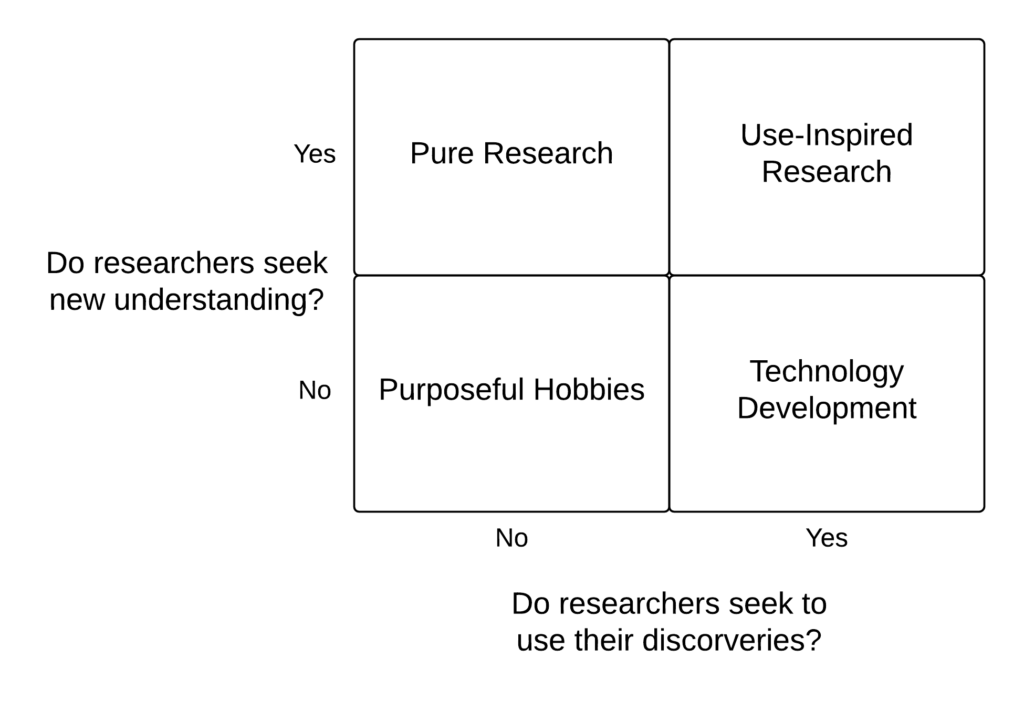This is an excerpt from Efficacious Technology Management: a Guide for School Leaders
In 1997, Donald Stokes suggested designing a project to be one type of research does not prevent one from doing the other type, so the dichotomy of pure and applied research is misleading. According to Stokes, many researchers seek to create new knowledge and to solve human problems simultaneously; so he suggested replacing the continuum of pure to applied research with a matrix in which one axis is labeled “Do researchers seek new understanding?” and the other is labeled “Do researchers seek to use their discoveries?” By dividing each axis into “yes” and “no” sections, four types of research emerge (see figure 7.2).

Pure and applied research as they were originally conceived do remain on this new matrix. The cognitive scientists who study brain structure and function with little concern for converting their discoveries into interventions are pure researchers whose work may ultimately affect education but designing interventions is not their primary purpose. The activity of computer programmers who are developing and refining educational games falls into the technology development quadrant. In general, they seek to build systems that are efficient, and they build their systems to leverage the discoveries of cognitive scientists, but their work does not contribute to new understanding.
Stokes’ matrix introduces a category of research in which there is neither intent to make new discoveries nor intent to apply any discoveries. While it may seem a null set, there are interesting and fulfilling hobbies such as bird watching that fall into this quadrant. Similar activities are those in which discoveries and applications of knowledge is for personal fulfillment and entertainment. Stokes’ matrix also introduces a category of activity in which the researcher intends to both make new discoveries and apply the discoveries; he labeled this “use-inspired research” and referred to it as Pasteur’s quadrant. You may recall Louis Pasteur was a 19th century French biologist and he “wanted to understand and to control the microbiological processes he discovered” (Stokes, 1997 p. 79). Pasteur’s approach was to both explain the natural science of these diseases and to define interventions that would prevent them. In the same way, IT managers seek to build efficacious systems in their schools and to understand what makes them so.
At the center of use-inspired research is an intervention which is designed to solve a problem. In school IT management, interventions will include many and diverse systems of hardware, software, and procedures and methods to use that hardware and software. Because it is focus of research, interventions can be understood in terms of theory. Theory explains what is observed, and theory predicts what will be observed when systems are changed. Because it is the focus of technology development, interventions are revised so that desired changes are observed. Use-inspired researchers also seek to observe performance in multiple ways. A single measure is not sufficient for the efficacious IT manager whose planning and decision-making is grounded in use-inspired research.
Reference
Stokes, D. E. (1997). Pasteur’s quadrant: Basic science and technological innovation. Brookings Institution Press.